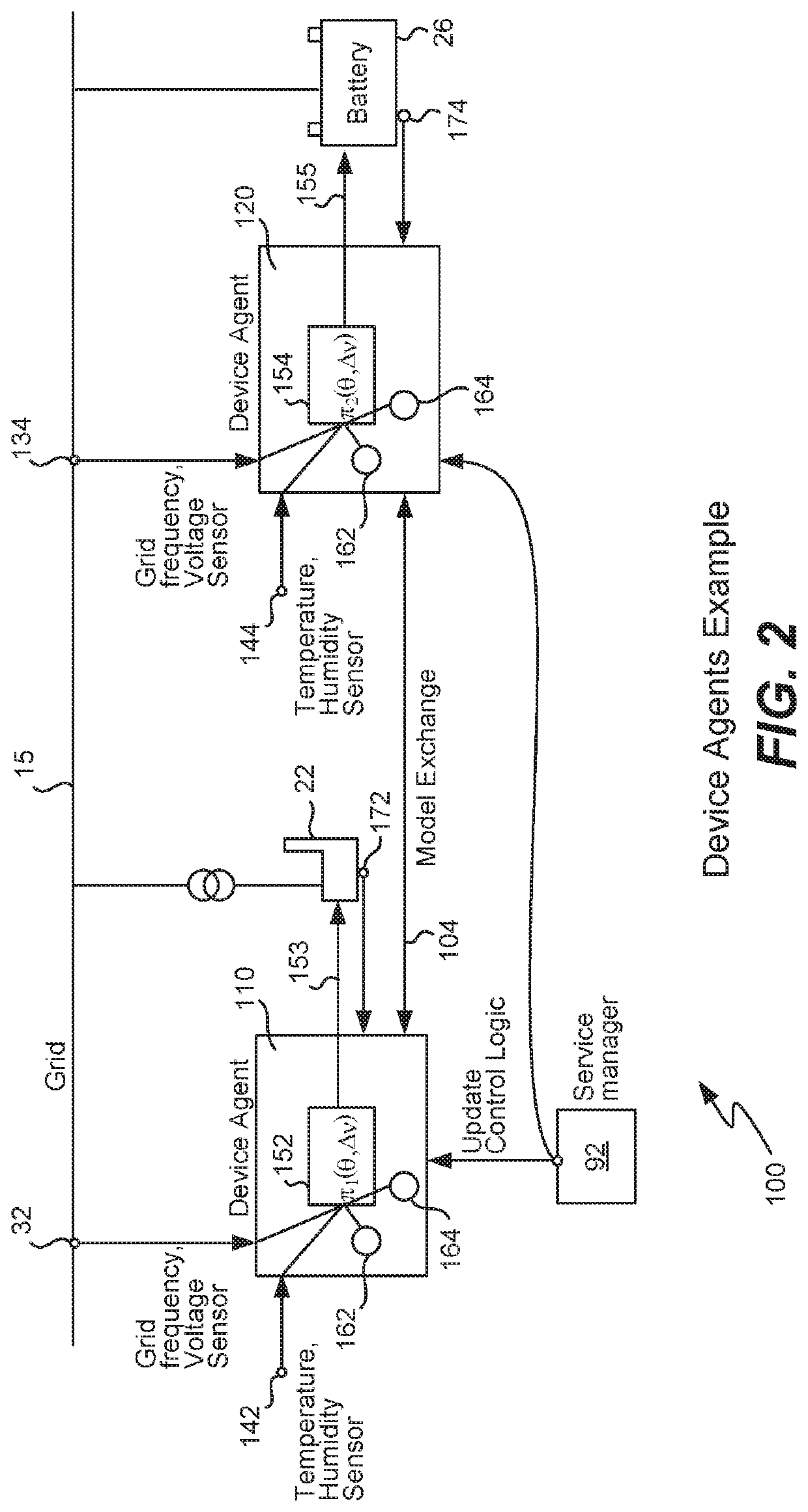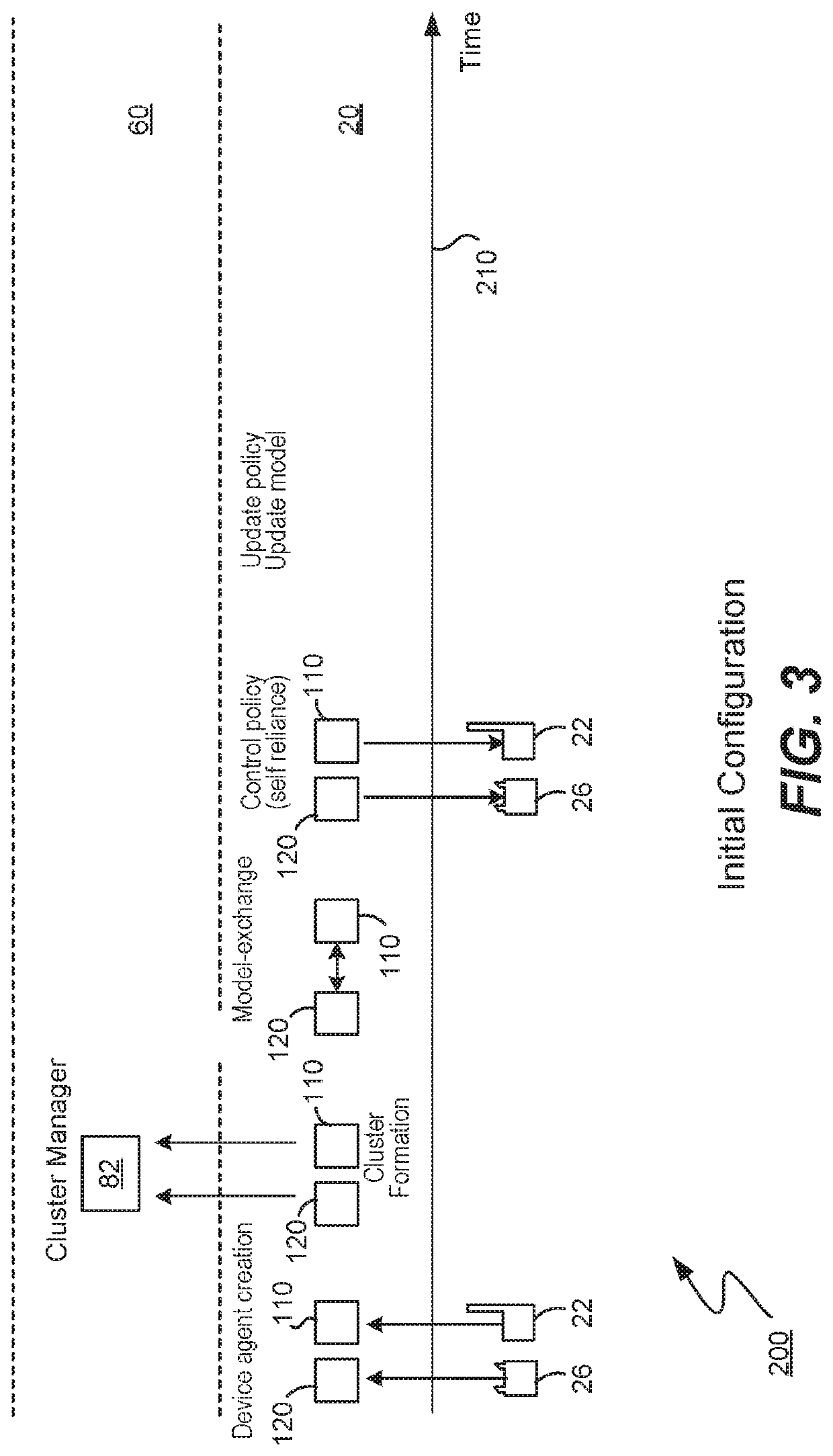Self-organizing demand-response system
a demand response and self-organization technology, applied in the direction of financial management, instruments, ac network load balancing, etc., can solve the problems of grid operators' difficulty in managing grid operators' inability to provide the frequency control needed by (or under contract with) grid operators, and the effect of increasing the difficulty of grid operators to manage aspects of their respective energy grids
- Summary
- Abstract
- Description
- Claims
- Application Information
AI Technical Summary
Benefits of technology
Problems solved by technology
Method used
Image
Examples
ledger embodiment
Distributed Ledger Embodiment
[0142]Various steps of the invention may benefit from being implemented using a distributed ledger (such as a block chain). For example, a distributed ledger may be used to exchange models, i.e., models are sent using a distributed ledger that validates the model through a peer-to-peer communication network (such as a network that is N-1 secure). If device A and device B decide to work together in a virtual pool and exchange models MA and MB, as a consequence the behavior of device A will be influenced by device B and vice versa, thus, a distributed ledger provides security for the transaction. Models can be updated on a regular basis, again using a distributed ledger.
[0143]The models may be used to calculate the exchange of physical constraints between loads (such as the number of run cycles) again using a distributed ledger that secures the transaction. The values of the transactions may be used in contracts between the loads of the cluster. In the cas...
PUM
 Login to View More
Login to View More Abstract
Description
Claims
Application Information
 Login to View More
Login to View More - R&D
- Intellectual Property
- Life Sciences
- Materials
- Tech Scout
- Unparalleled Data Quality
- Higher Quality Content
- 60% Fewer Hallucinations
Browse by: Latest US Patents, China's latest patents, Technical Efficacy Thesaurus, Application Domain, Technology Topic, Popular Technical Reports.
© 2025 PatSnap. All rights reserved.Legal|Privacy policy|Modern Slavery Act Transparency Statement|Sitemap|About US| Contact US: help@patsnap.com



